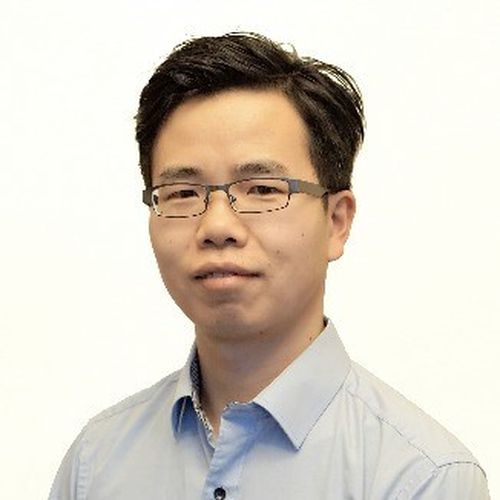About This Webinar
Stimulated Raman scattering (SRS) microscopy has become a powerful chemical imaging tool that shows significant promise in numerous biological and biomedical applications. In a typical SRS microscopy setup, two synchronized ultrafast lasers are overlapped in space and time to coherently excite molecules at the microscope objective focus with high efficiency. The photon energy difference of both lasers corresponds to the vibrational energy of the molecules. SRS signal strength is directly proportional to molecular concentration. This allows for in situ quantitative analysis of the chemical composition of heterogeneous samples with submicron spatial and subminute temporal resolution.
Dan Fu, Ph.D., from the University of Washington highlights the capability of SRS microscopy in imaging various molecules in heterogenous samples from simple mixtures to living cells and animals. He then shares the challenges in quantitative analysis with SRS imaging due to scattering, as well as potential solutions in leveraging water as an internal standard. With continuous improvement in imaging resolution, sensitivity, and specificity, SRS is poised to play an important role in biomedical imaging.
Who should attend:
Researchers, lab managers, and engineers who work with or are interested in stimulated Raman scattering microscopy and imaging. Those who work in biological or biomedical applications who utilize microscopy, spectroscopy, imaging, photolysis, and molecular research. Anyone in industries such as medicine, biomedicine, pharmaceuticals, and cancer research.
About the presenter:
 Dan Fu, Ph.D., associate professor of chemistry at the University of Washington in Seattle, received his bachelor’s degree from Peking University in China. He completed his doctorate at Princeton University in 2009 under the supervision of professor Warren Warren, working on the development of label-free multiphoton absorption microscopy methods. He then worked as a postdoctoral associate at the G.R. Harrison Spectroscopy Lab led by the late professor Michael Feld at MIT, where he investigated quantitative phase microscopy and its applications to live cell imaging. In 2010, Fu moved to Harvard University to work with professor Sunney Xie as a postdoctoral fellow, where he developed multiplex stimulated Raman scattering microscopy and hyperspectral stimulated Raman scattering microscopy. He joined the faculty of the University of Washington in 2015, where his main research interests are the development and applications of quantitative chemical imaging tools to study the various pathophysiological processes of living biological specimens at single-cell resolution. He is a recipient of the Beckman Young Investigator Award, the NSF Career Award, the NIH MIRA Award, and the Eli Lilly Young Investigator Award.
Dan Fu, Ph.D., associate professor of chemistry at the University of Washington in Seattle, received his bachelor’s degree from Peking University in China. He completed his doctorate at Princeton University in 2009 under the supervision of professor Warren Warren, working on the development of label-free multiphoton absorption microscopy methods. He then worked as a postdoctoral associate at the G.R. Harrison Spectroscopy Lab led by the late professor Michael Feld at MIT, where he investigated quantitative phase microscopy and its applications to live cell imaging. In 2010, Fu moved to Harvard University to work with professor Sunney Xie as a postdoctoral fellow, where he developed multiplex stimulated Raman scattering microscopy and hyperspectral stimulated Raman scattering microscopy. He joined the faculty of the University of Washington in 2015, where his main research interests are the development and applications of quantitative chemical imaging tools to study the various pathophysiological processes of living biological specimens at single-cell resolution. He is a recipient of the Beckman Young Investigator Award, the NSF Career Award, the NIH MIRA Award, and the Eli Lilly Young Investigator Award.